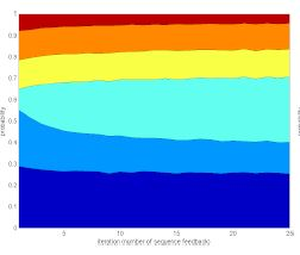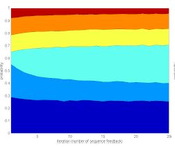Information
- Publication Type: Bachelor Thesis
- Workgroup(s)/Project(s):
- Date: April 2017
- Date (Start): 1. October 2016
- Date (End): 19. April 2017
- Matrikelnummer: 1129264
- First Supervisor:
Abstract
In this work a user centered procedural modeling framework is proposed which combines rule based content generation with the concepts of recommendation systems. Using the ACGAX modeling language, artists are able to write grammar scripts for the creation of diverse and complex 3D scenes, controlled with a simple goal notation. These scripts are evaluated and executed by the system to generate 3D-shapes using stored production rules from the cloud. The rule selection process is based on content based information filtering systems to create results matching the user’s preferences. User feedback is collected in a way that integrates explicit feedback into the modeling work flow via manual locking operations. These actions allow users to directly control the derivation process of grammars by fixing certain parts of the derivation tree. The goal of this research is not only to create a modeling tool, but a growing database of grammars, rules and feedback records. By observing how users interact with the grammars, the system learns which rules are most suitable for certain goals. The proposed system is designed to to learn from a user’s actions to improve the cloud based rule selection process for future modeling tasks.Additional Files and Images
Weblinks
No further information available.BibTeX
@bachelorsthesis{Winkler-2017,
title = "Collaborative Procedural Modeling driven by User Feedback",
author = "Andreas Winkler",
year = "2017",
abstract = "In this work a user centered procedural modeling framework
is proposed which combines rule based content generation
with the concepts of recommendation systems. Using the ACGAX
modeling language, artists are able to write grammar scripts
for the creation of diverse and complex 3D scenes,
controlled with a simple goal notation. These scripts are
evaluated and executed by the system to generate 3D-shapes
using stored production rules from the cloud. The rule
selection process is based on content based information
filtering systems to create results matching the user’s
preferences. User feedback is collected in a way that
integrates explicit feedback into the modeling work flow via
manual locking operations. These actions allow users to
directly control the derivation process of grammars by
fixing certain parts of the derivation tree. The goal of
this research is not only to create a modeling tool, but a
growing database of grammars, rules and feedback records. By
observing how users interact with the grammars, the system
learns which rules are most suitable for certain goals. The
proposed system is designed to to learn from a user’s
actions to improve the cloud based rule selection process
for future modeling tasks.",
month = apr,
address = "Favoritenstrasse 9-11/E193-02, A-1040 Vienna, Austria",
school = "Institute of Computer Graphics and Algorithms, Vienna
University of Technology ",
URL = "https://www.cg.tuwien.ac.at/research/publications/2017/Winkler-2017/",
}

 thesis
thesis

